Five years ago Ric and I had a superb trip to the granite playground of the Grimsel Pass and surrounding area in the Swiss Alps, ticking some long slab routes and the mega-classic Sudgrat on the Salbitschijen. However, unseasonably wet and chilly weather had us running for cover to the limestone of the Jura pre-Alps, meaning a return trip was always on the cards. This August, a last-minute aligning of the stars found us heading back to the Grimsel, intent on climbing the one that got away last time; Fairhands Line (6a+).
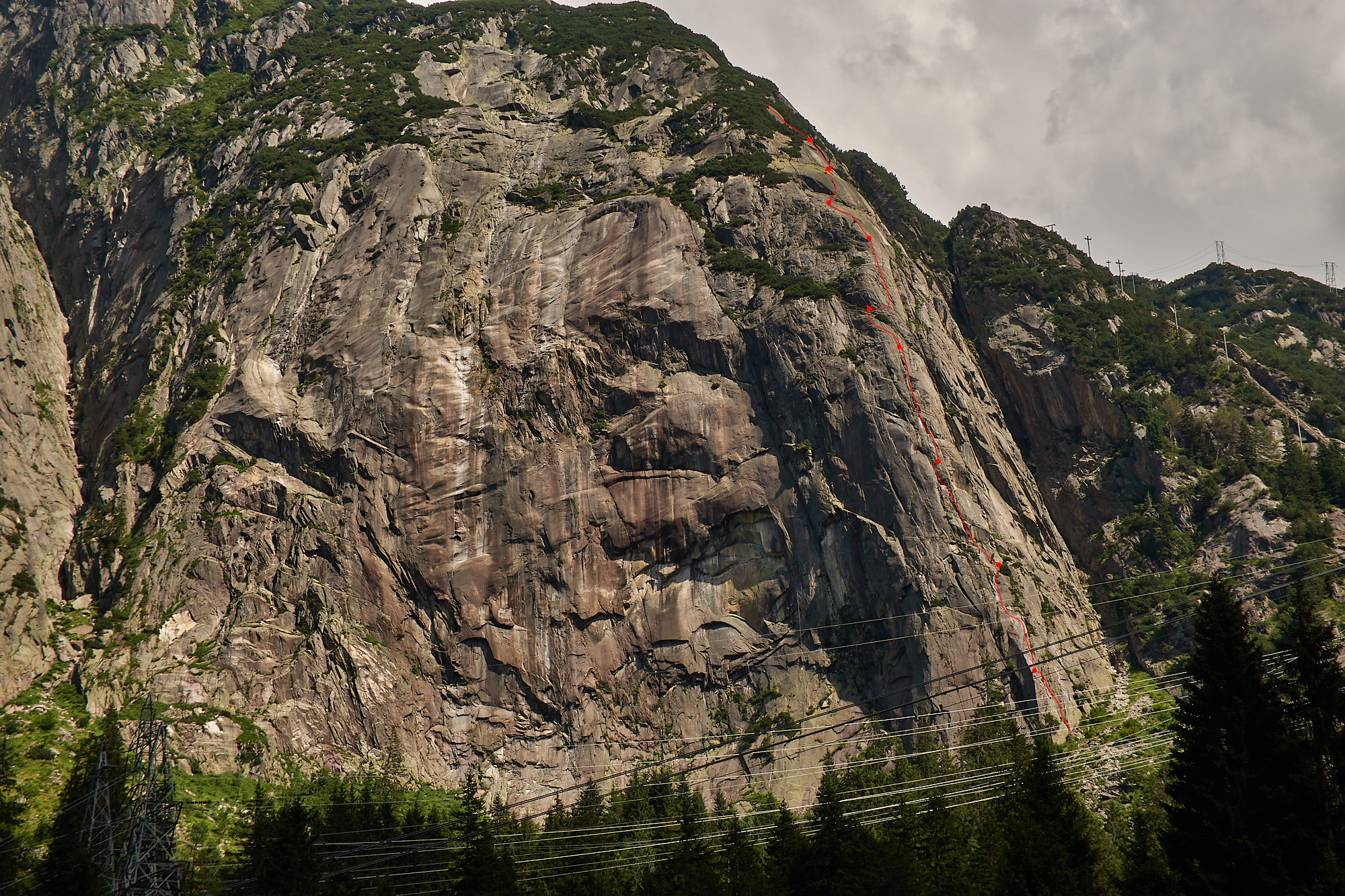
Fairhands Line is a ten pitch, 330m classic, taking a striking line of cracks and slabs up the blunt crest on the right of the Handegg. The route is partially bolted but has a distinct “alpine” feel and climbs more like an E1/E2 than a sport climb. The rock quality is mostly impeccable, barring a few loose flakes and blocks on pitches 3 and 4. Having arrived in good time and on a fine forecast, we wasted no time and jumped on the route on our first day in the Pass.
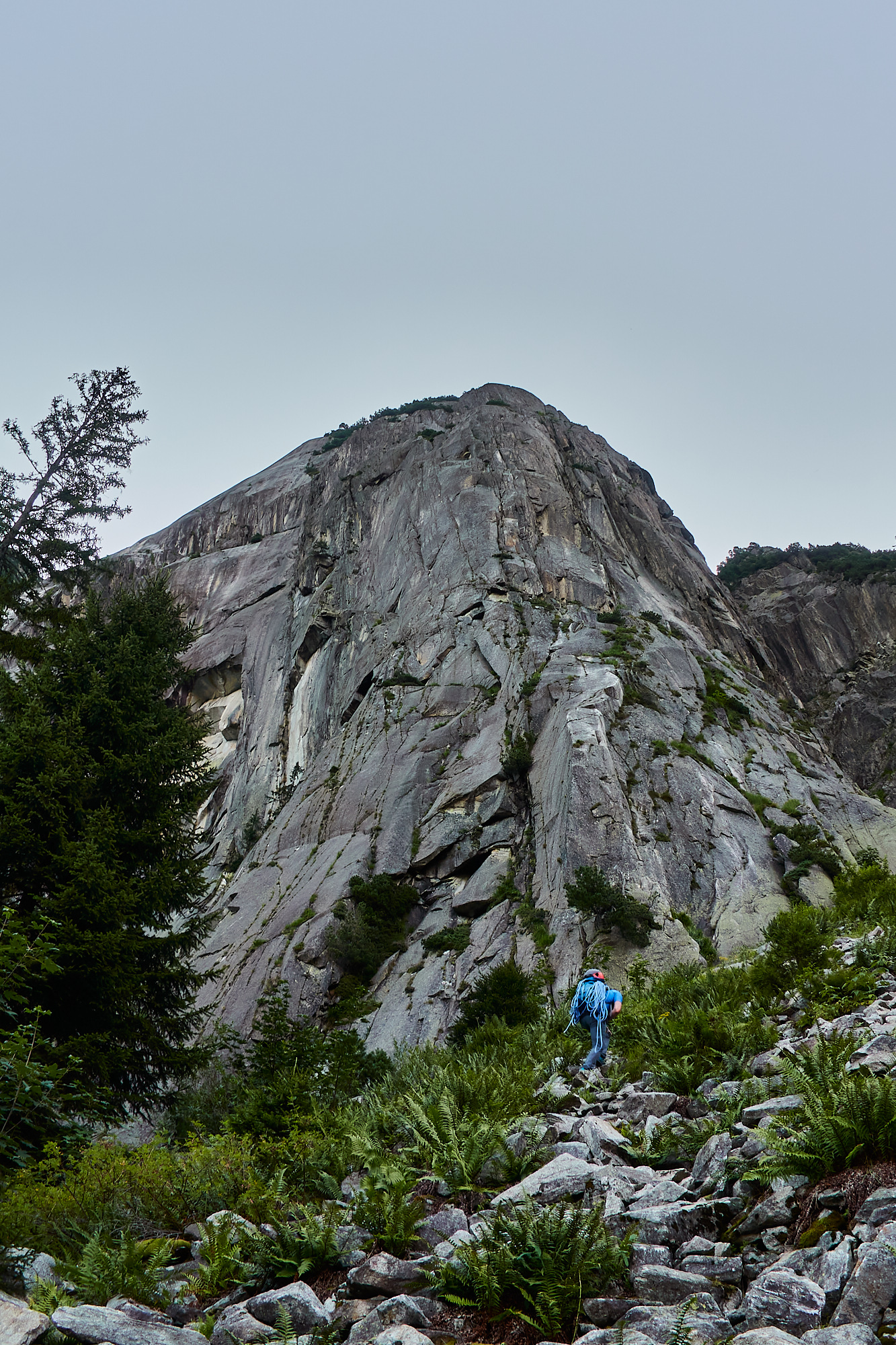
We slipped, slid and sweated along the damp, muddy approach path, but given it’s only twenty minutes from the road we could hardly complain! Anticipating other parties vying for the route, we had started early and started up just as another team appeared below us on the scree. The first pitch is a good warm up, with some interesting moves up a groove to the crest of a slabby pillar. Playing to our strengths, Ric went again up the first of the 6a+ slab pitches, making delicate balance moves up the rounded arete on the right of the slab, before a hard leftwards traverse to reach easier ground.
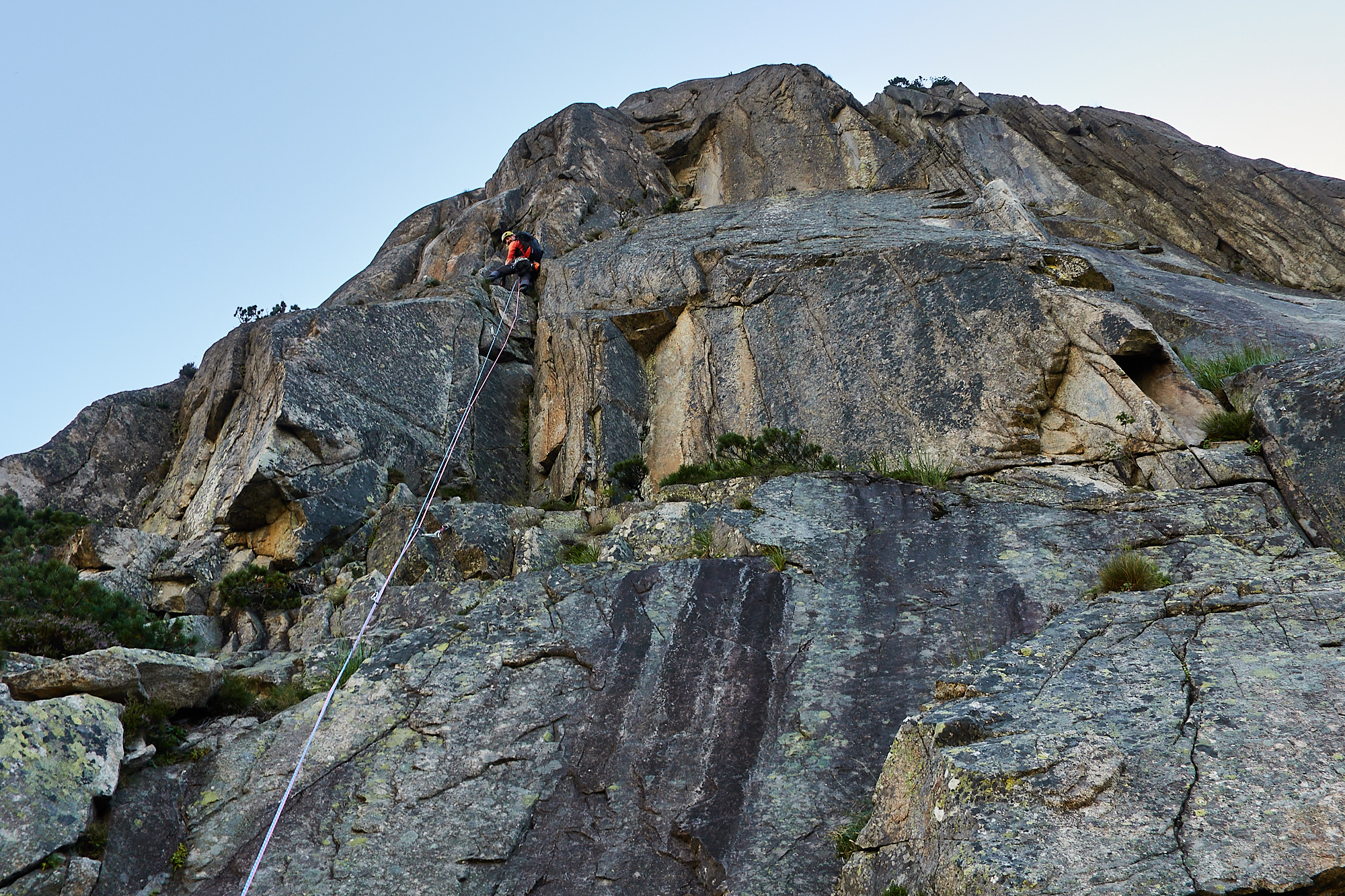
Pitch 2 was reasonably well-bolted but the soaring corners and cracks of the 6a third pitch relied mainly on trad gear. However, holds and cracks were plentiful and I could enjoy the steep, physical moves and growing exposure while placing cams as needed. This turned out to be one of the highlights of the route, with the juggy hand-traverse into the final crack providing a fine finale to the pitch.
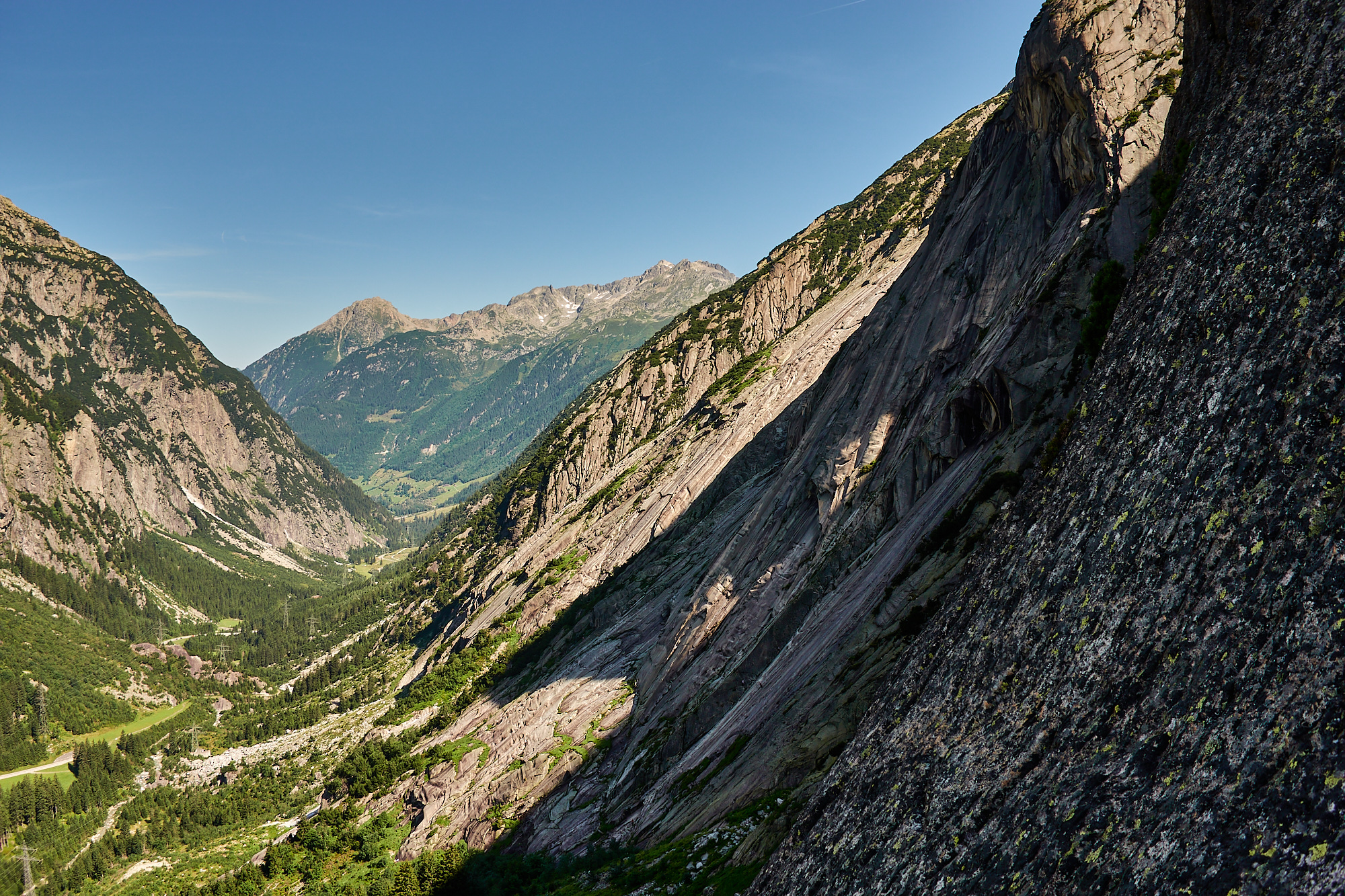
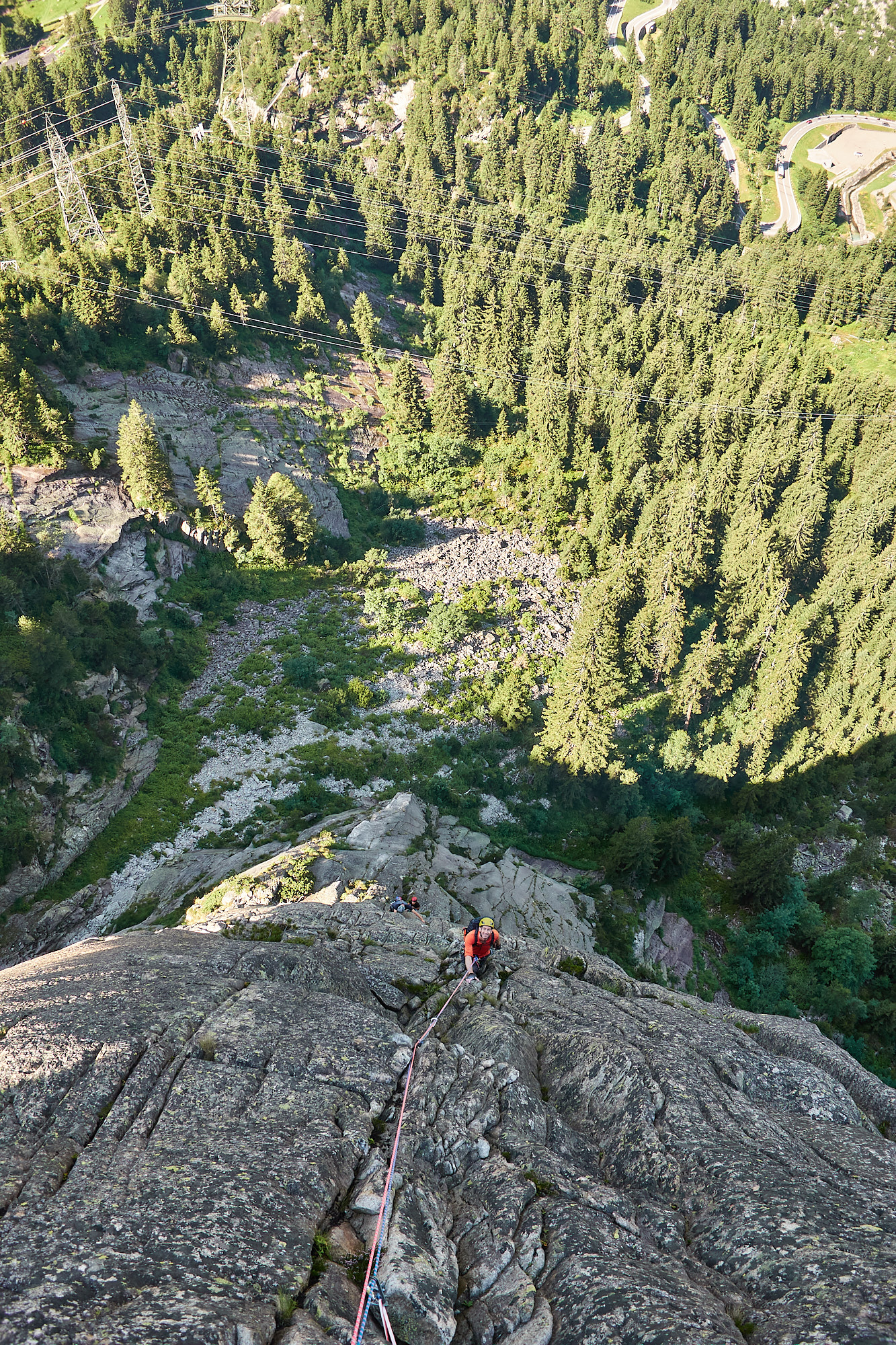
The difficulty eased marginally on the next pitch, which continued in the same crack line, albeit with some Creagan Dubh Loch-esque granite weirdness to contend with. A particularly awkward exit to a steep groove nearly had me parting company with the rock in my haste to make progress! By this point, the local alpine ninjas that had wafted up the route behind us climbed past and we didn’t see them again until the campsite that evening!
The next four pitches were all superb, but slightly easier, allowing us to make good time and climb as much as we could before the sun finally caught us. Pitch 8 stood out for it’s steep, wide crack, which gradually rolled over into thin parallel seams, necessitating opposing footwork and some clamping to reach the slab above.
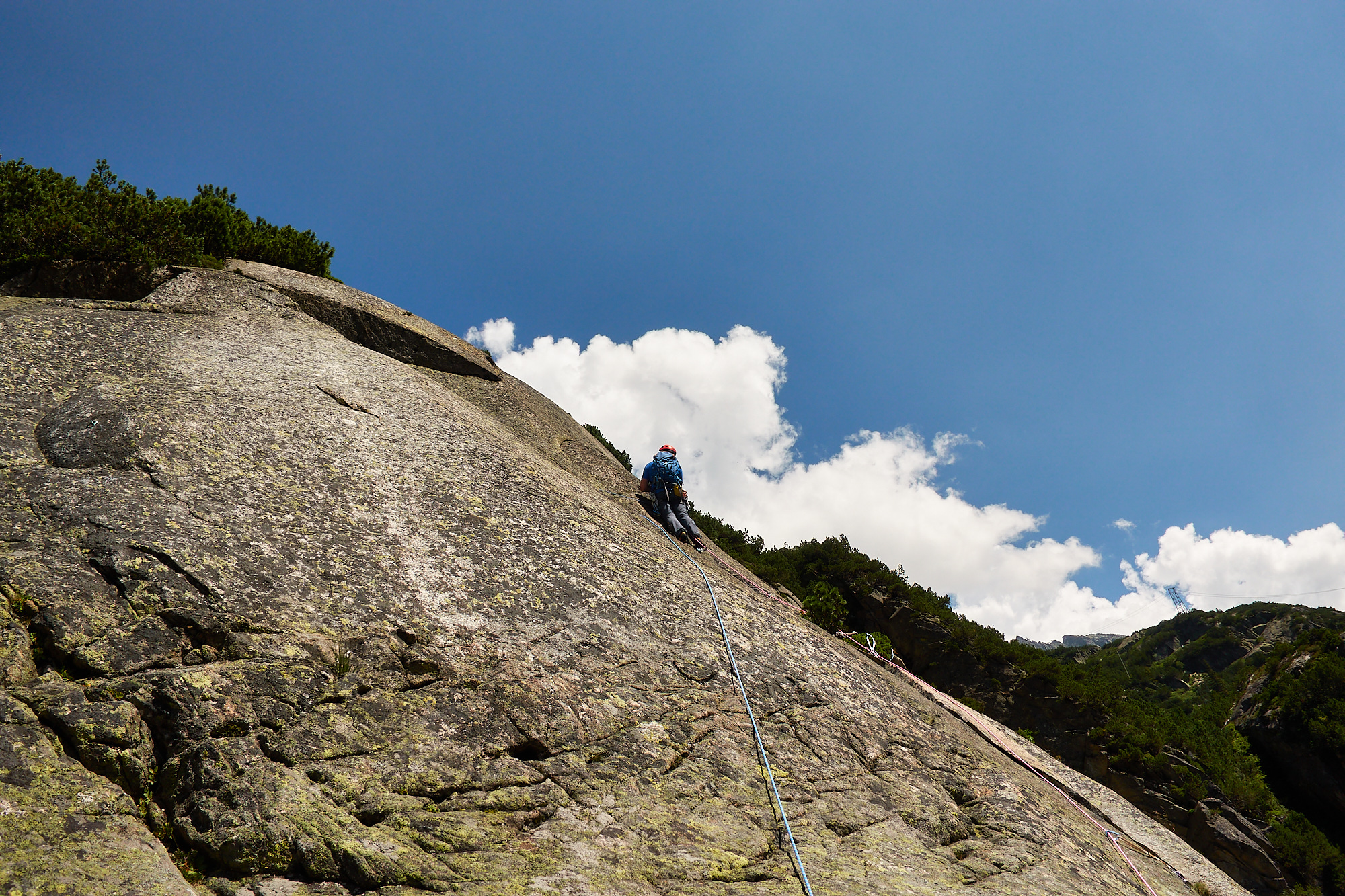
We took a well-earned breather on the ledge below pitch 9, anticipating a battle on the crux 6a+ slab above. The sun was now cooking us and the rock was hot to the touch – not exactly ideal for climbing thin, technical slabs. The first half of the pitch is straight forward, with a razor-flake leading up to a foot-rail at the start of the difficulties. A hard mantel to good foot-holds allows a bolt to be clipped, before a desperate, thin sequence ensues. The next bolt seemed a long way away, but Ric valiantly pulled through, with some interesting contortions resulting in him ending up horizontal at one point – how he stayed on we will never know!
I seconded as best I could, employing as much technique as I could muster (and the odd move of French-free, ahem) to finally arrive at the penultimate belay drenched in sweat and mildly strung-out. The route wasn’t about to capitulate easily though. The final pitch may well be the psychological crux, with horrendous bolt spacing, little opportunity for trad gear and serious fall potential. I sketched up with a bit of jibbering, perplexed at the odd choice of bolt placement, to thankfully arrive unscathed at the top of the route!
To cap off the climb, the unique descent follows the relentlessly steep emergency stairs at the side of the Gelmerbahn funicular railway. Being Europe’s steepest funicular, this descent is vertigo-inducing and no joke on the knees! It was fun seeing the bemused faces of the tourists sitting in the train as they rolled by us bedraggled climbers – what a way to end the day!
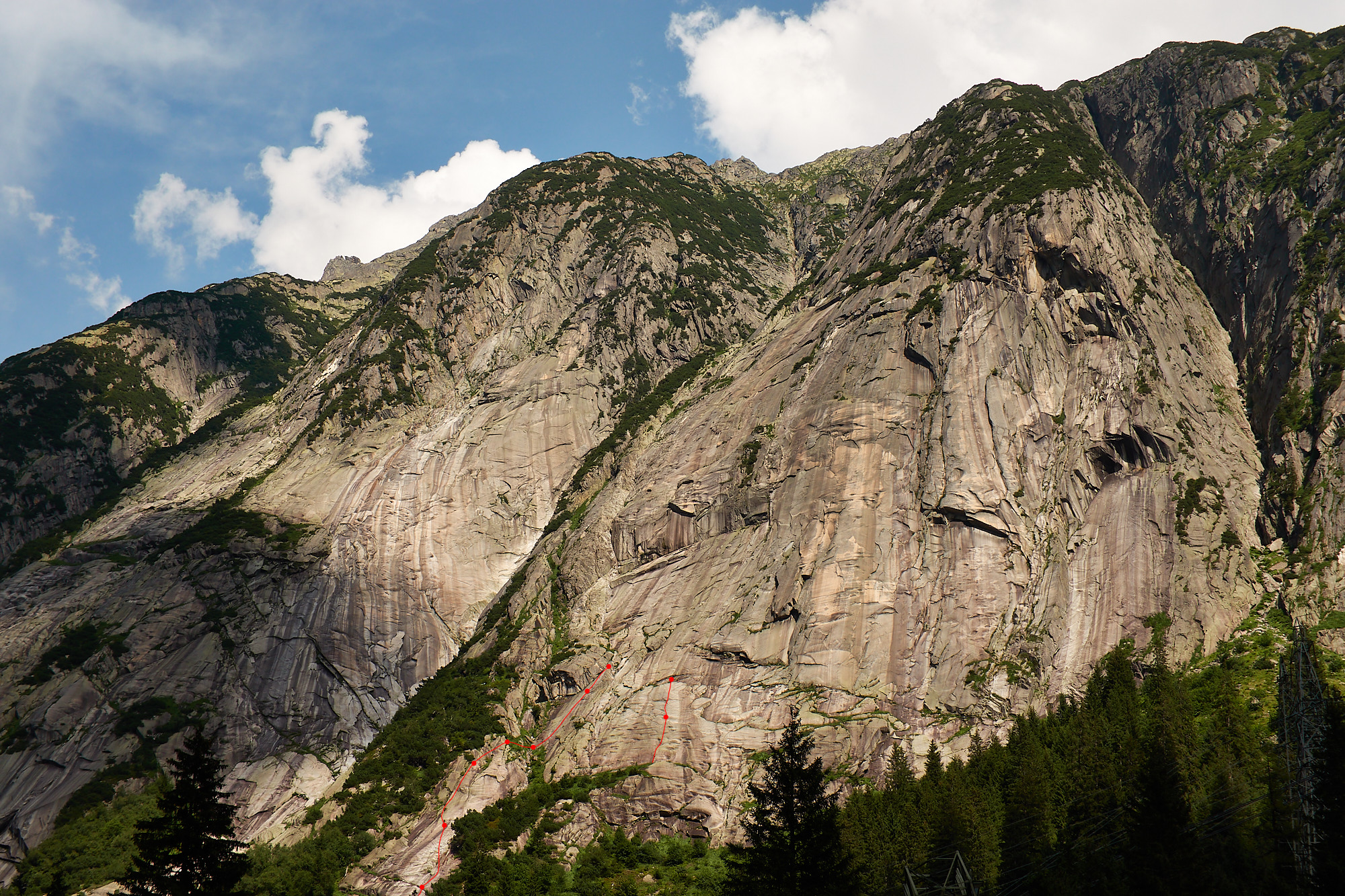
The following day was a bit of a write-off – a late start, extreme heat and residual tiredness saw us only climb a few pitches before scampering off for an early beer. Day three was an entirely different matter and we climbed ten (mostly mellow) pitches on the ridiculous Handegg slabs. This place makes The Etive Slabs look like a scrappy, vegetated, tick- and midge-infested, minor crag. Hmmm.
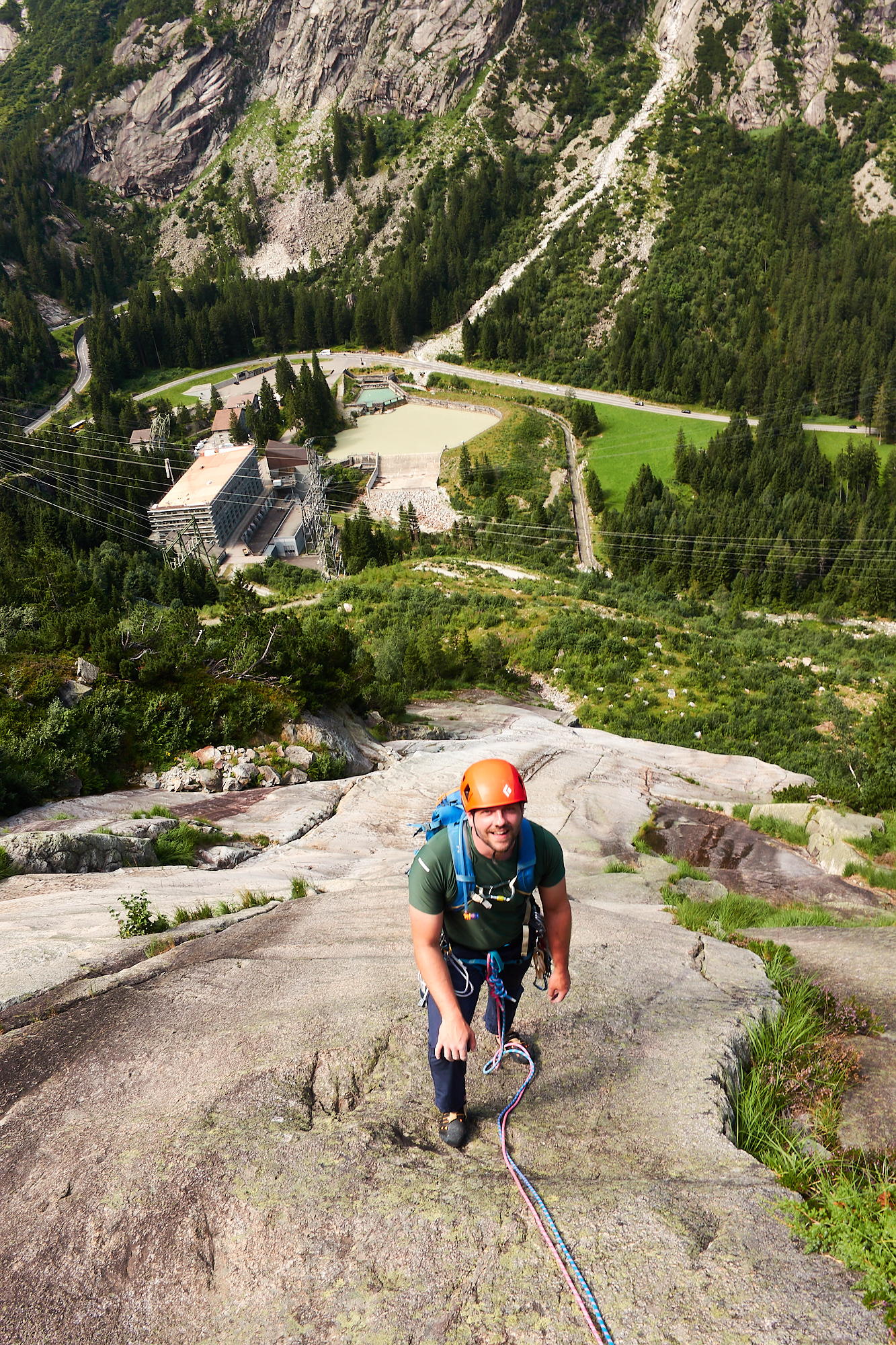
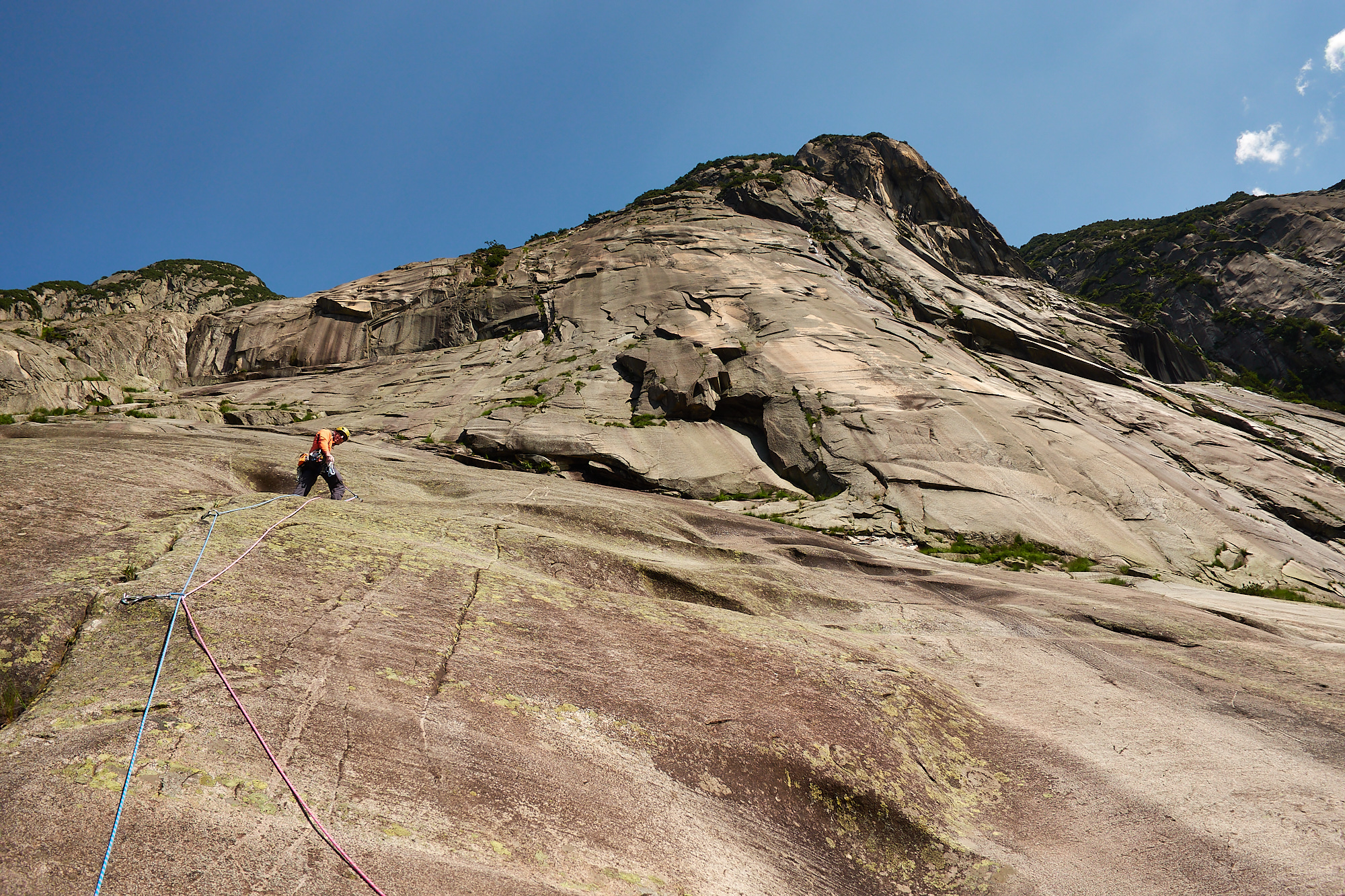
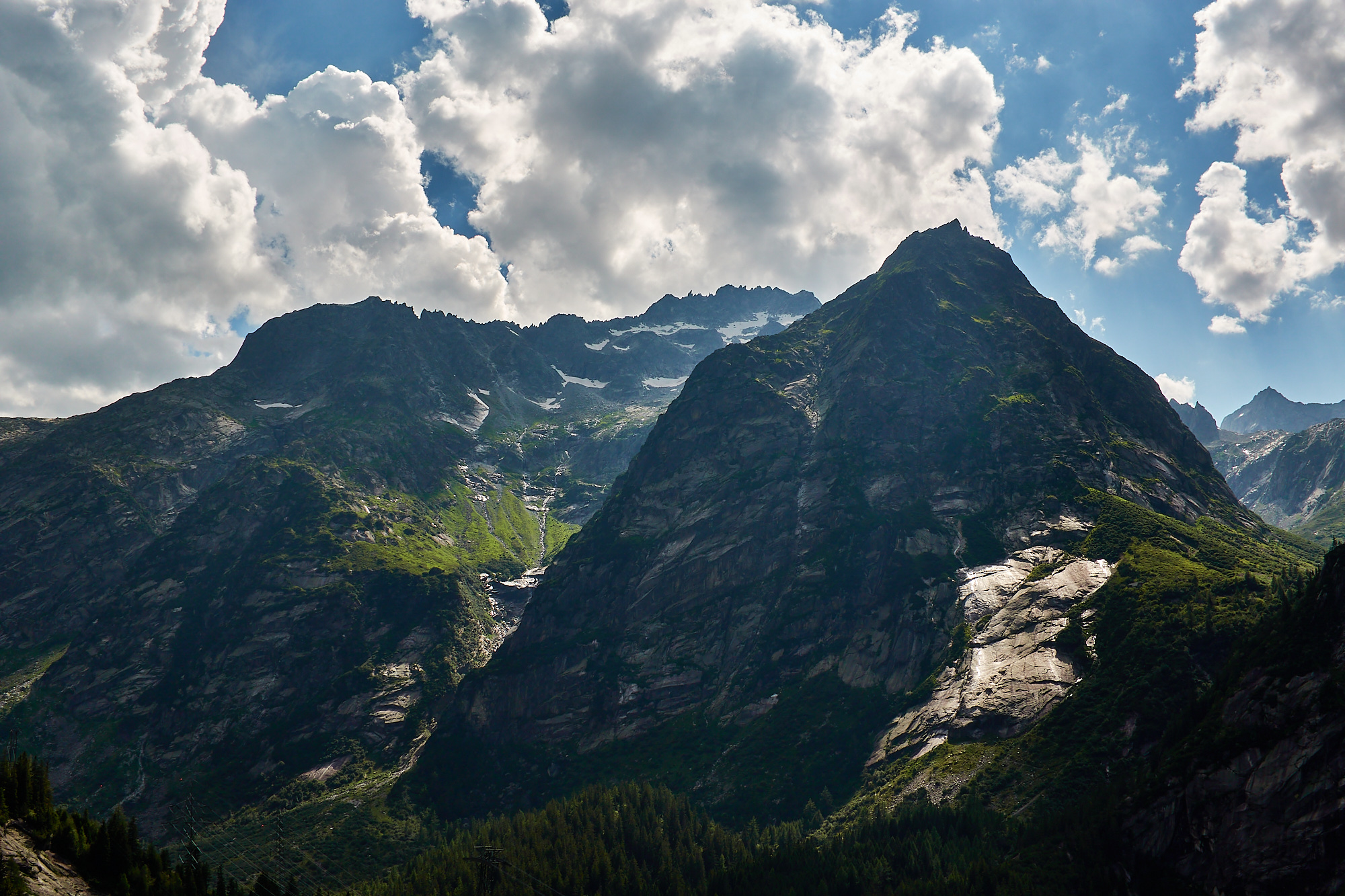
The following day looked wet from early afternoon, so needing a quick hit to beat the weather we headed up the neighbouring Susten Pass and climbed Plattenweg (5b) – a seven pitch sport route on lovely, rough gneiss. We managed to beat the rain and set about making plans for a bigger route the next day.
Clearly visible from the road towards the top of the Grimsel Pass, the sweeping tongue of the Sommerloch Slabs had always looked inviting and Baal Integral (6a), taking a natural line straight up the middle, was the clear choice. The weather was still roasting and tactically we should have gone for a later start to climb more in the afternoon shade.
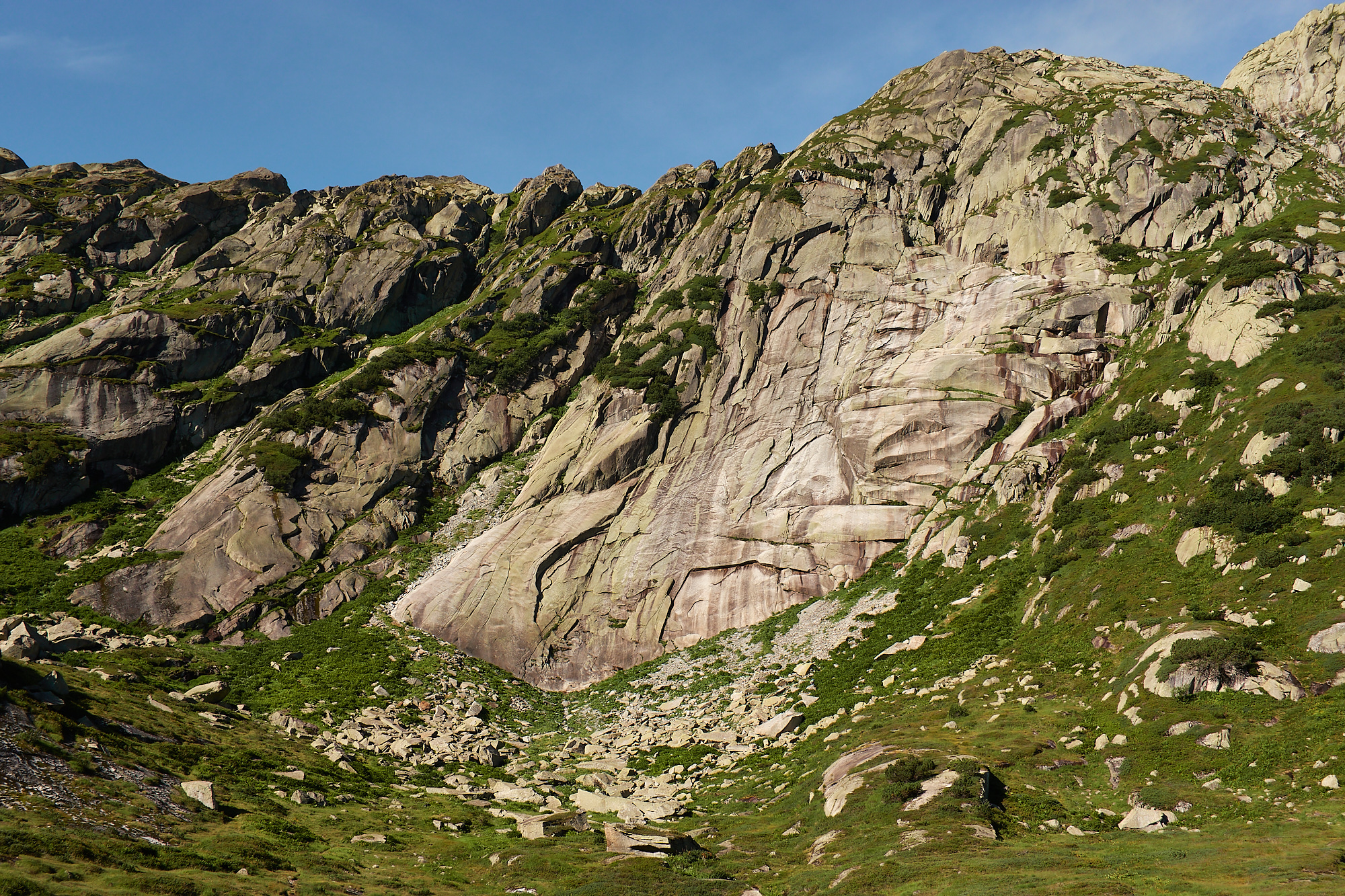
Things started well, with a clean corner crack on the left of the lower slabs providing an easy lay-back up to the first overlap. A tricky step left and some dimples in a quartz vein led up to the first belay at the base of the main slab.
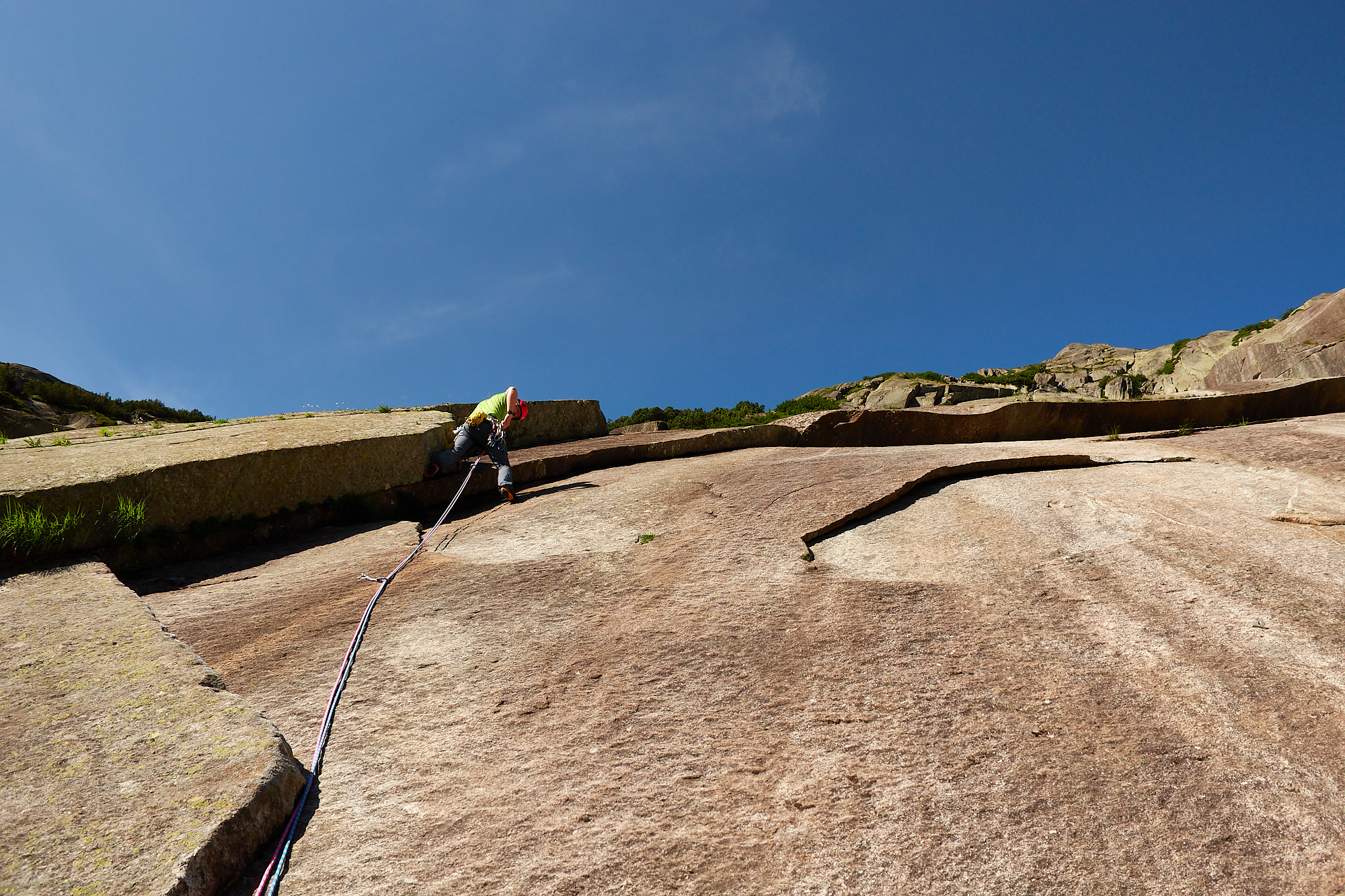
Friction slabs are mostly “type-two” fun as far as I’m concerned and despite the immaculate rock, the combination of day-five tiredness and spaced bolts resulted in a distinct loss of psyche. Ric was unfazed however, so took the reins and floated us up three more pitches of (admittedly) fantastic climbing.
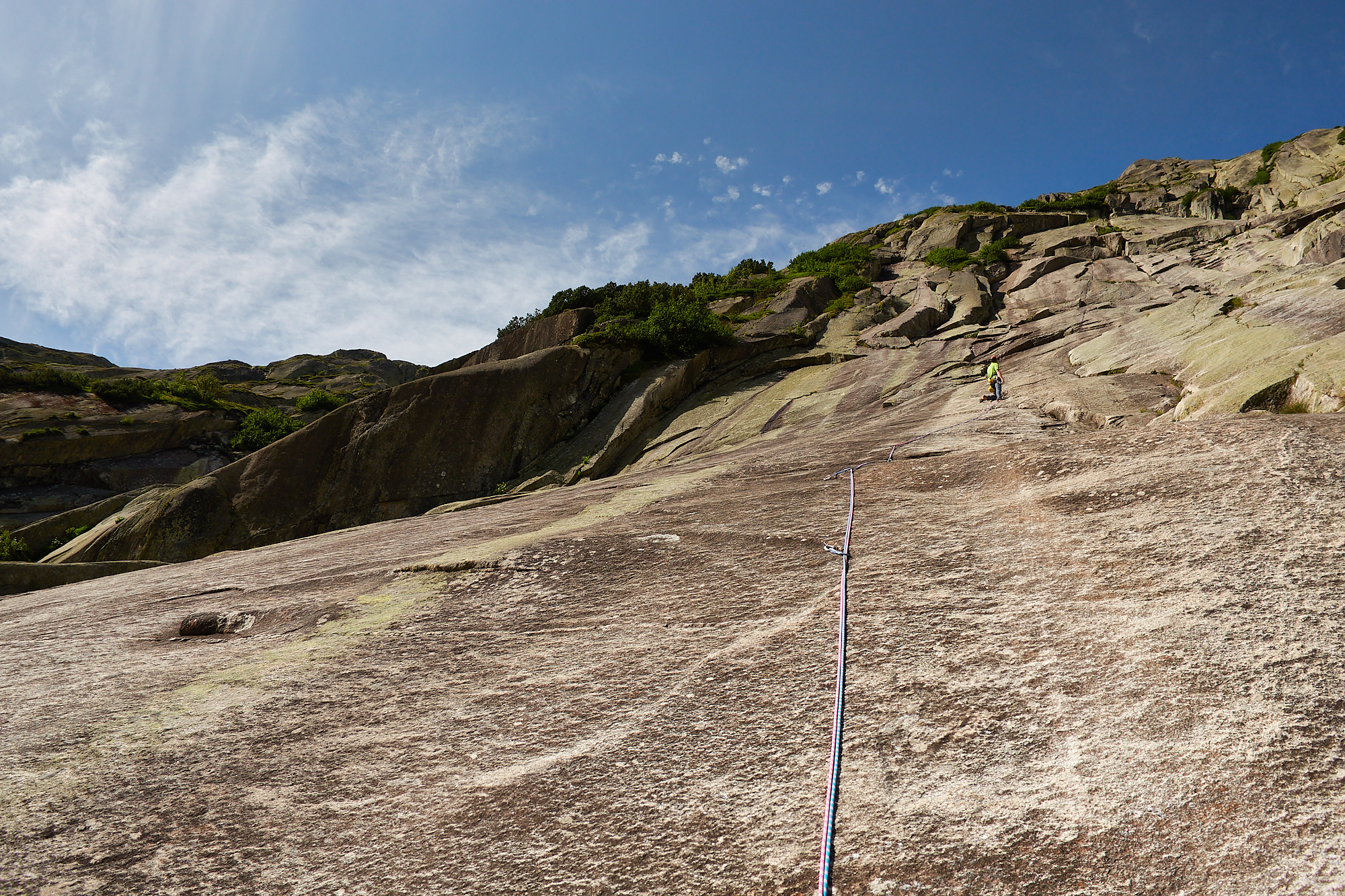
As the rock became steeper and more featured, my enthusiasm increased and as my toes had now gone totally numb, they also ceased to be a concern. Foolishly, I took the lead for pitch 5 but as soon as my confidence had returned, it was immediately dashed as the bolts ran out. Unwilling to commit to the run-out to the belay, we decided to bail. What’s the point in bolting two thirds of a pitch?
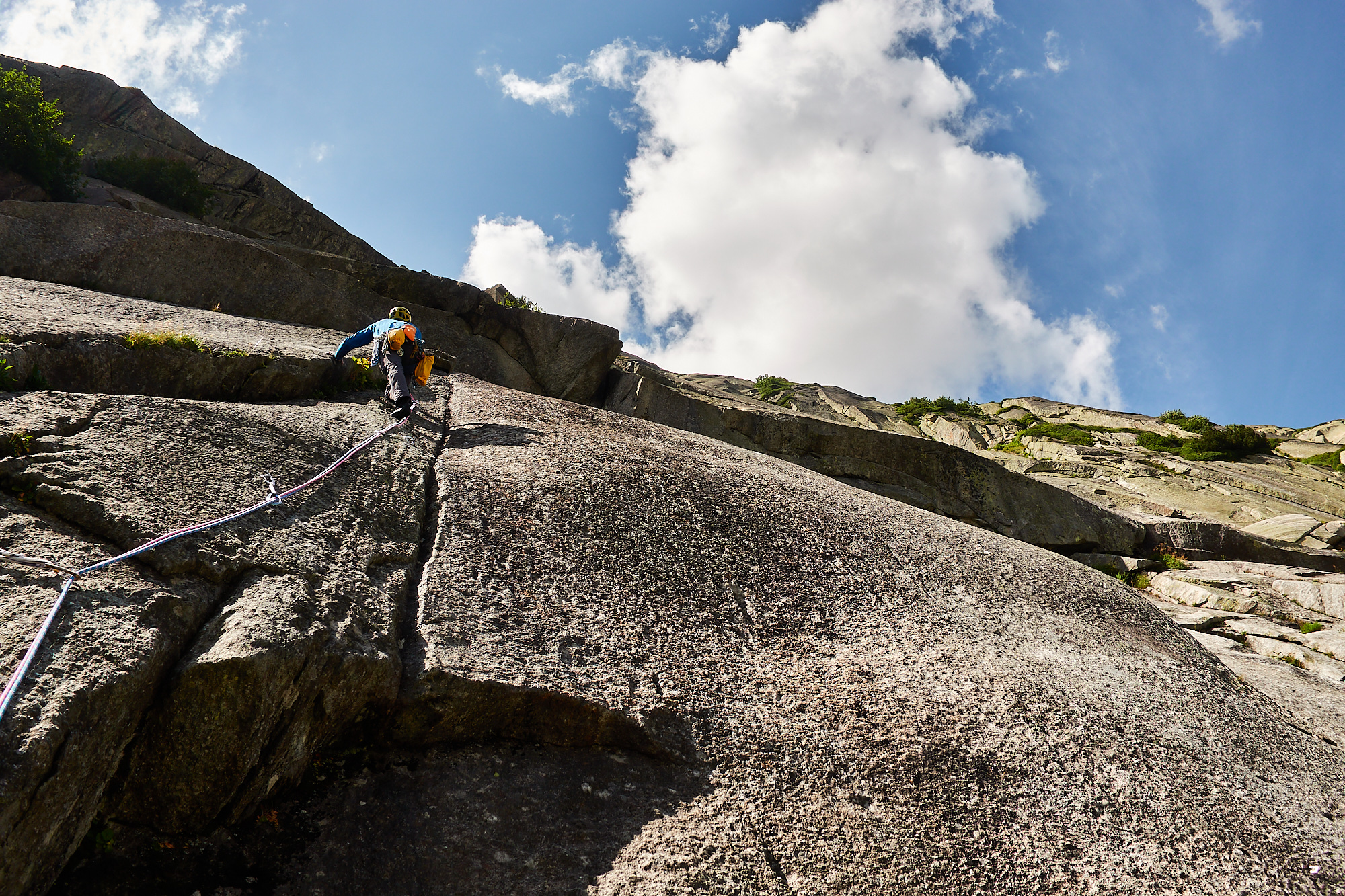
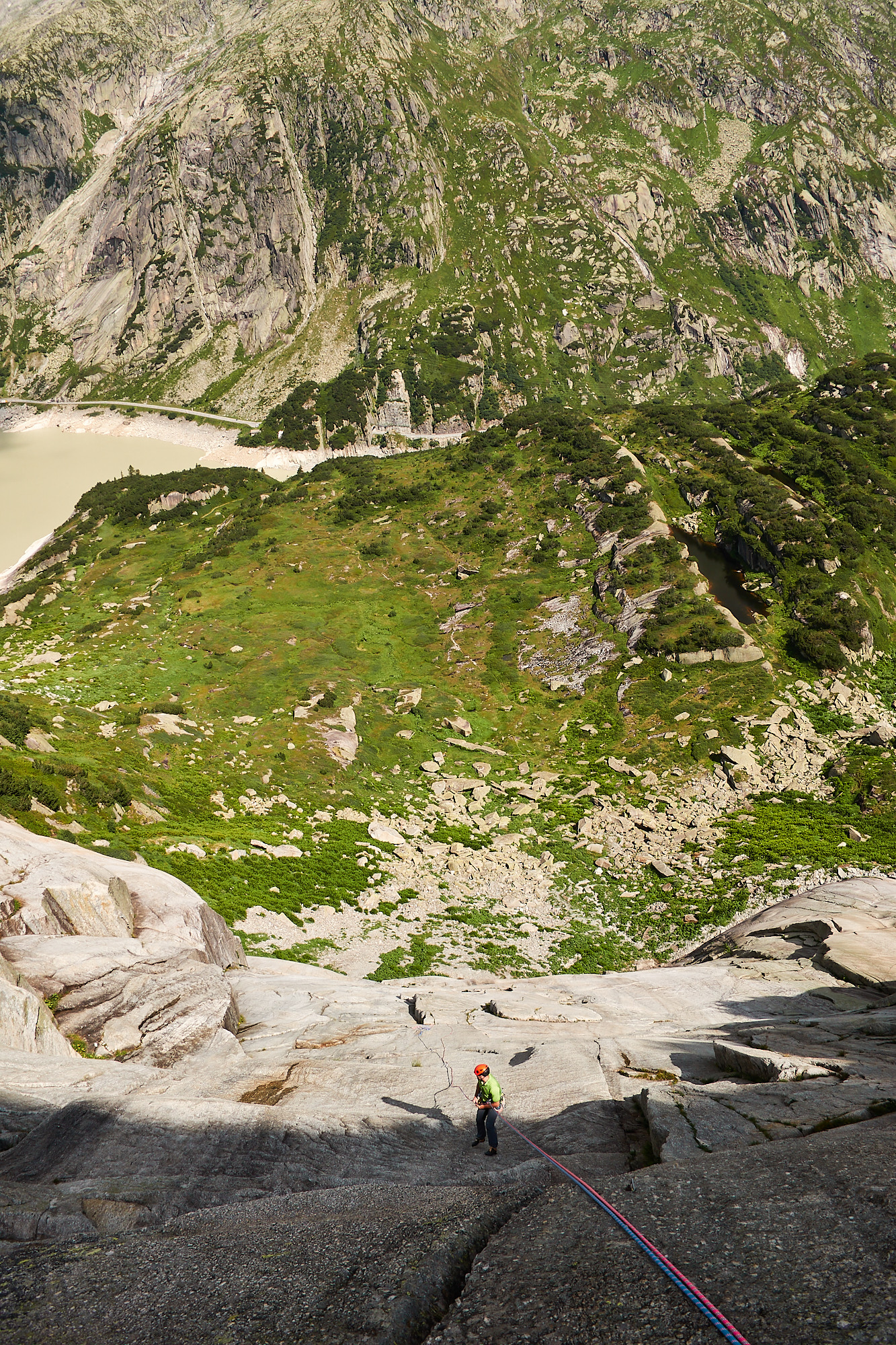
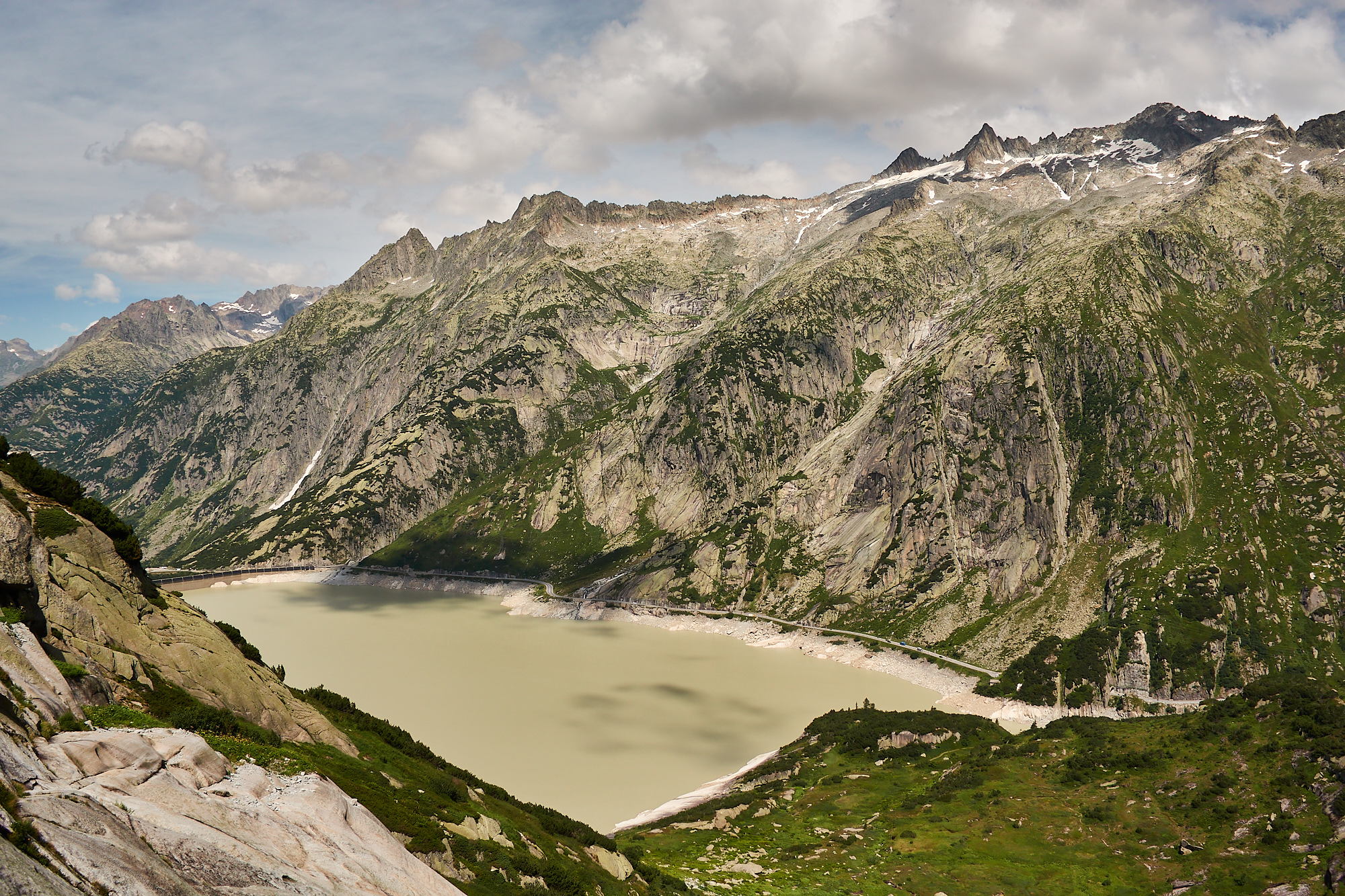
With another fine day in prospect, we elected for a change of scene and to go a bit higher in an effort to beat the heat. Day six saw us hiking up to the Pfriendler Pillar in the Susten Pass for the 230m, 6-pitch Troimli (5b). This sharp pinnacle of rough gneiss is much steeper than the granite we’d climbed during the week and promised to provide an entirely different style of climbing, in more traditionally alpine surroundings.
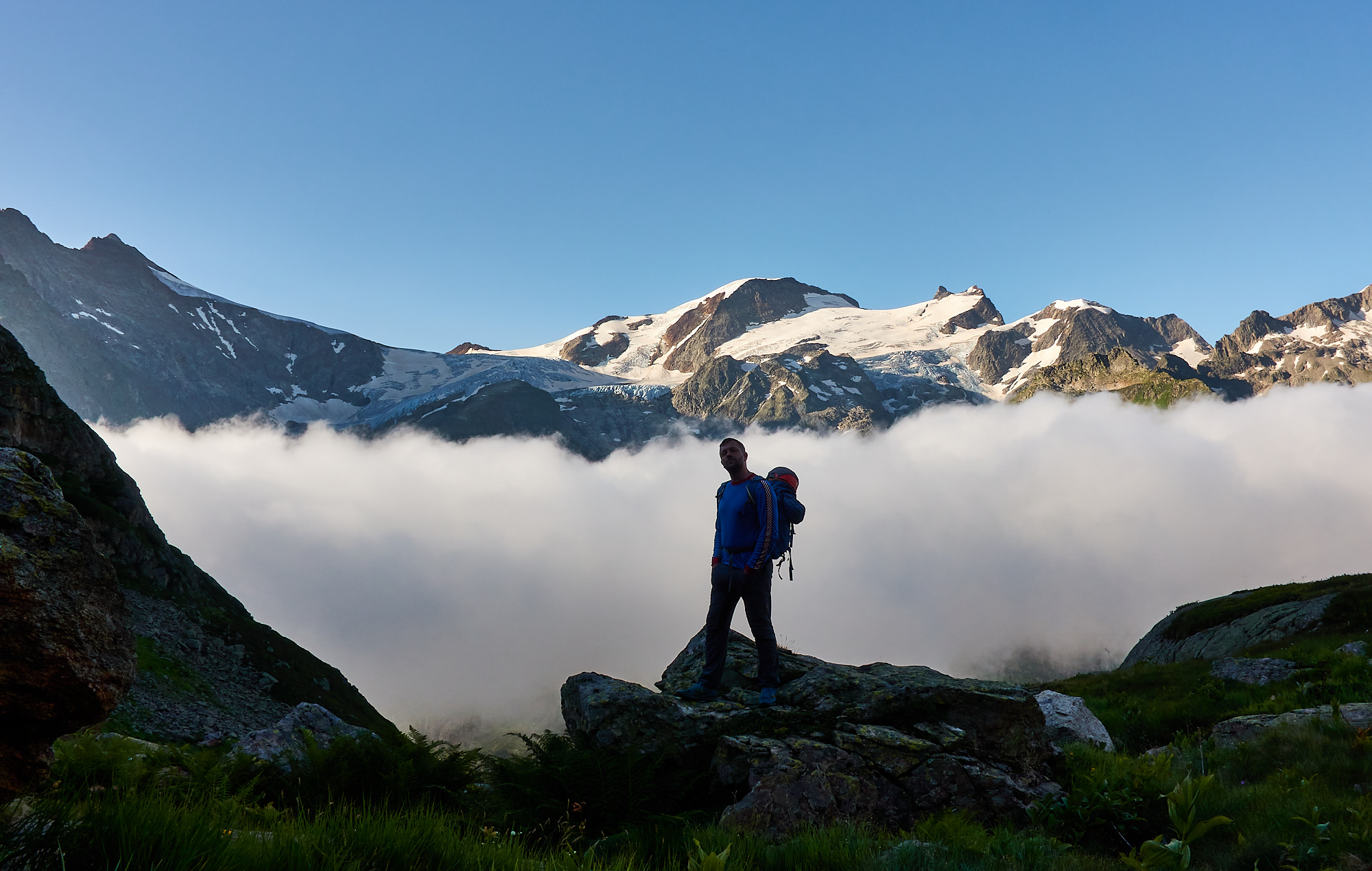
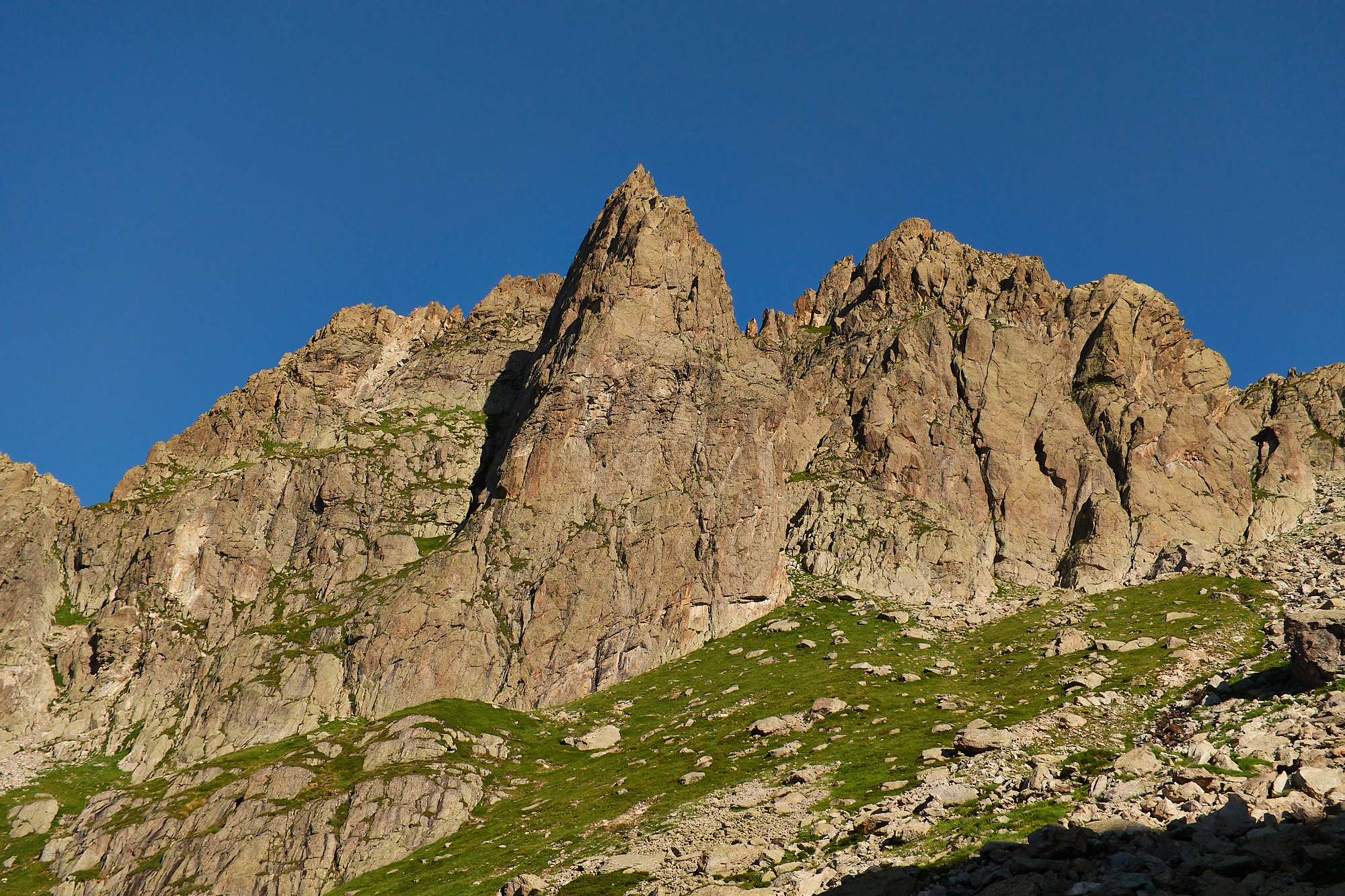
The walk up to the Pfriendler felt like a slog after a whole week on the go, not helped by a route-finding error in the boulder field below the crag. There were no complaints though, as the surroundings and views were breathtaking! Within an hour we were heading up the route with my head in an entirely different place on the steep, juggy gneiss.
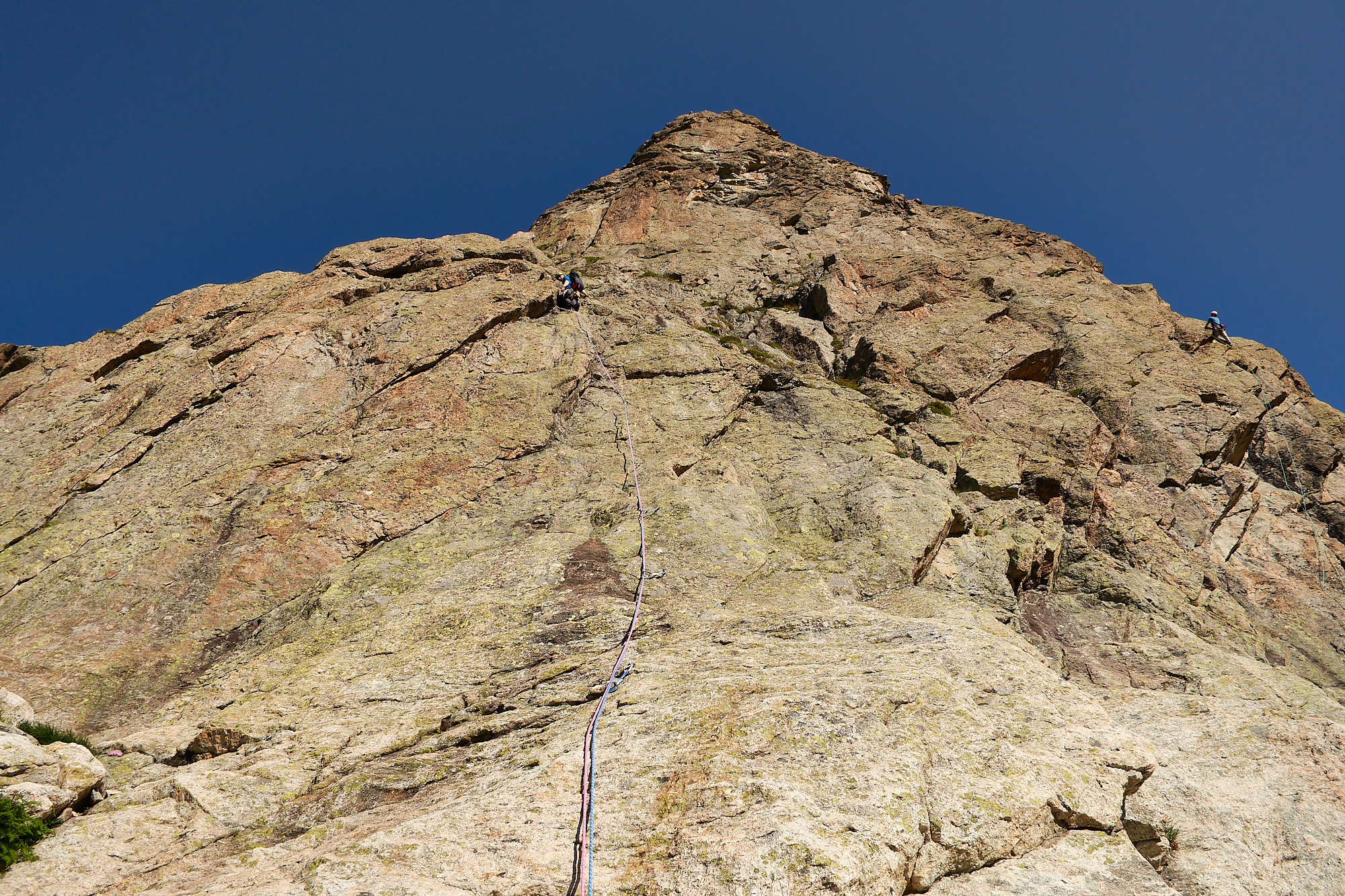
Every pitch was challenging enough to maintain interest but never particularly hard, save for a tough move to surmount the roof on pitch 4, which probably warrants 5c. What they all had in common was their quality, especially pitches 3 and 4 which were outrageously steep and exposed but festooned with massive holds!
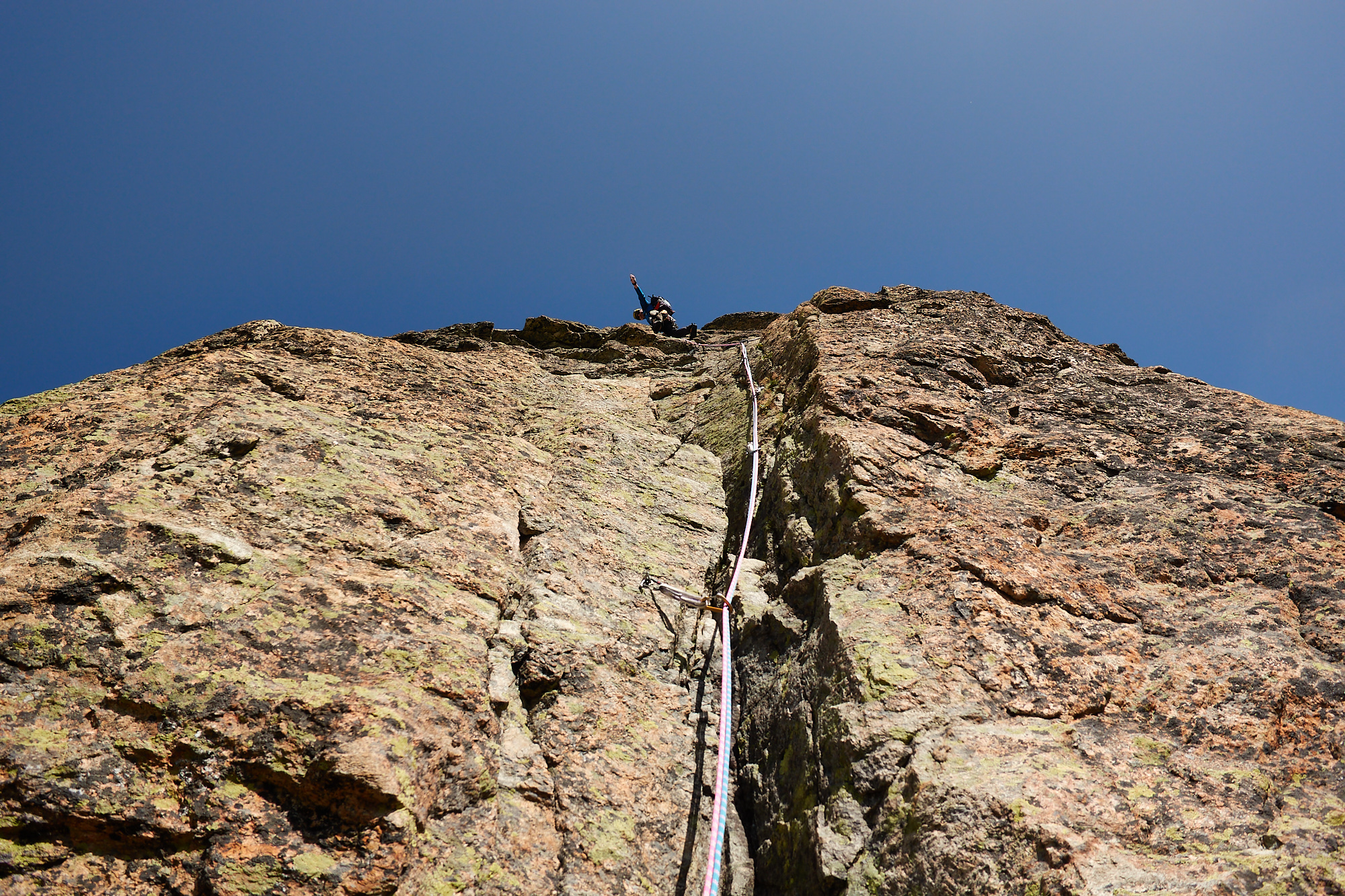
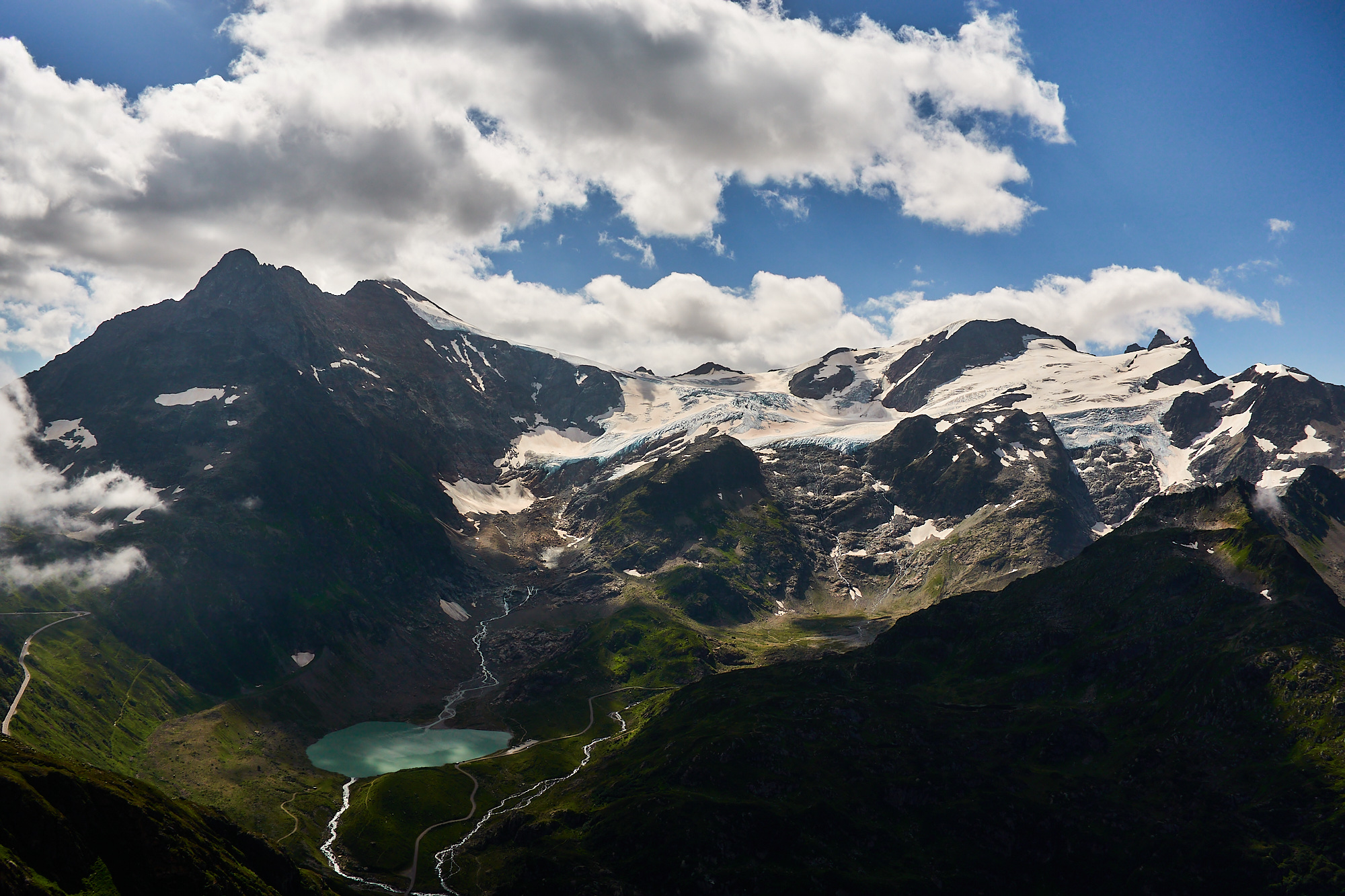
In contrast to our first trip to the area, the weather remained superb for the whole week, leaving us no choice but to climb every day and generally have an excellent time. Given the sheer quantity of routes on offer and the ubiquitous quality, it seems highly likely that this visit won’t be our last!
